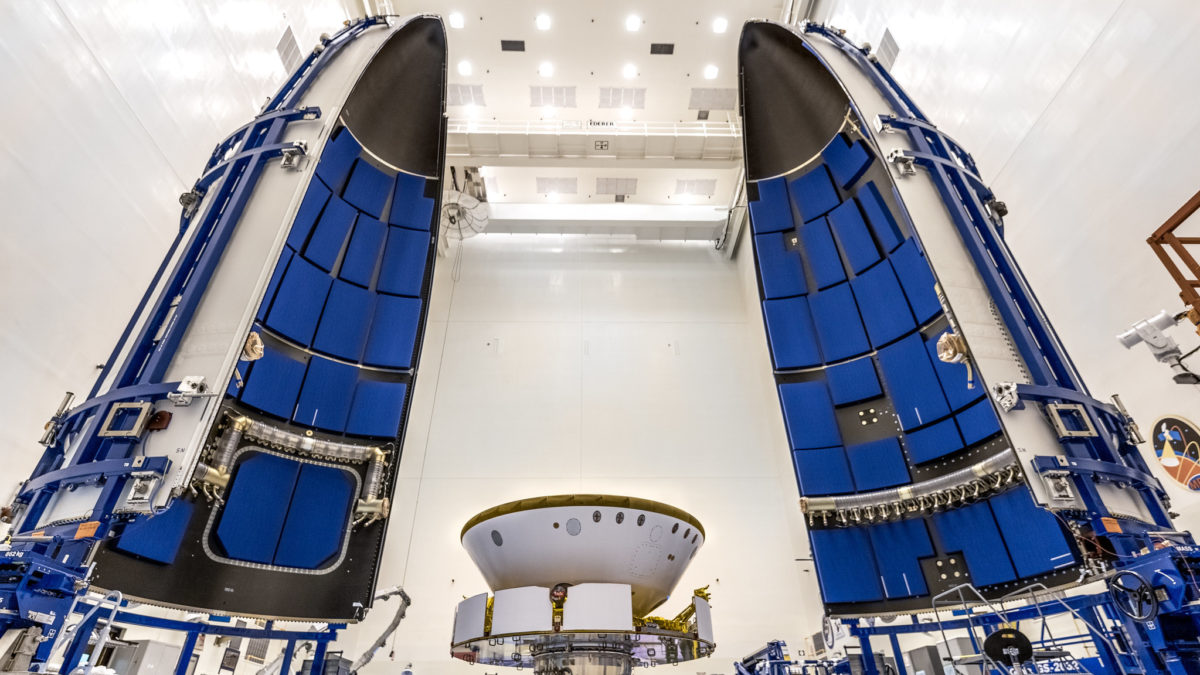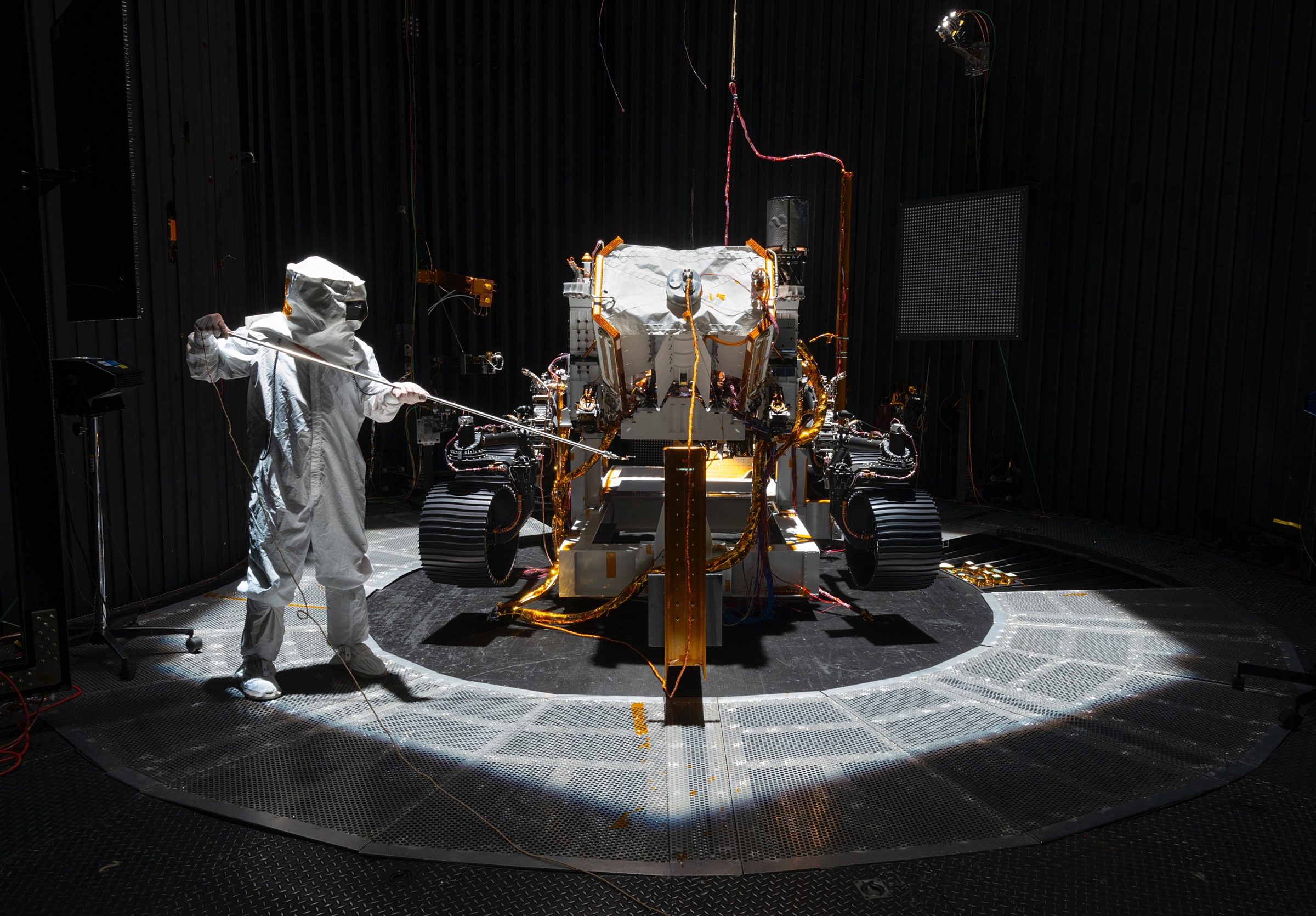Casey Dreier • Jul 29, 2020
The Cost of Perseverance, in Context
More modest than you might think
NASA expects to spend approximately $2.7 billion on the Perseverance rover project. This number can sound large, even excessive, to some—but it’s a number that demands context. Let’s give it some.
The Total Cost Includes Different Aspects of the Project
The total project cost, or Life-Cycle Cost (LCC) in NASA vernacular, includes the costs of spacecraft development (i.e. its design and construction), launch vehicle and processing work, and operations for its 2-year prime mission.
| Spacecraft Development | $2.2 billion |
| Launch Services (Atlas V 541) | $243 million |
| Prime Mission Operations (2 years) | $300 million |
| Total | $2.725 billion |
Note that the design and construction of the rover and its related components (including landing system and flight stage) account for only 81% of the total project cost. The rest is for launch and operations. The rover’s dependence on Plutonium-238 as a power source drives launch costs higher due to the elevated environmental and safety regulations for launching nuclear material.
This total does not include the costs of the Ingenuity helicopter, which cost $80 million to design and build and $5 million for 30 days of operation. The project is a technical demonstration, funded by a separate account from the rover itself.
Perseverance In Context
Large numbers can feel abstract, so here are some more intuitive ways to characterize the total cost of Perseverance.
The total cost of the Perseverance rover is equivalent to...
- 33 hours of running the Department of Defense
- Slightly less than 1 day of Social Security spending
- One year of spending on the Space Launch System rocket
- The amount of money Google makes in 6 days
- The amount of money Americans spend on their pets every 10 days
- Disney’s global box office revenue for Avengers: Endgame
Spending is Spread Out Over Time
Costs for space projects are spread out over years—if not decades. In this case, NASA didn’t waltz down to the rover store, whip out Uncle Sam’s credit card, and drop nearly $3 billion in one go. Scientific spacecraft are hand-made, boutique items. Each one must be invented before it is assembled. This requires many highly-trained people working very hard for many years. People need salaries to work. And the more people on a project, the higher its costs.
Mars Perseverance was designed and built over the better course of a decade. Its prime mission is set to last for at least 2 years. The project began in 2013 and its prime mission ends in 2023 (any mission extensions—while likely—are considered optional and thus additive to the life-cycle cost). The $2.7 billion project cost is the sum total of spending over these 11 years, though it is not spent evenly. The following chart shows that annual spending on the project varied dramatically.
Mars Perseverance rover spending by fiscal year. Amounts after the current year are official projections. The project began formulation in 2013 and entered the implementation (build) phase in 2016. The completed rover left the Jet Propulsion Laboratory in February 2020 for launch in July. Source: Planetary Science Budget Dataset, compiled by Casey Dreier for The Planetary Society (accessible on Google Sheets or downloadable as an Excel file).
Perseverance followed a standard cost-curve for aerospace projects: relatively low spending at the outset as the project, followed by a peak a few years before launch as the project enters its maximum point of complexity, with costs trailing off as engineering and testing winds down and the mission moves into operations. By the time of launch (when this article was written), the majority of the lifetime spending on the Perseverance rover has already occurred.

How does the cost of Perseverance stack up to other NASA planetary missions? The Planetary Society’s Planetary Exploration Budget Dataset allows us to make direct, inflation-adjusted comparisons to NASA’s other solar system exploration projects.
| Spacecraft | Launch Date | Life-Cycle Cost (2020 $) |
|---|---|---|
| Cassini | 1997 | $4.6 billion |
| Europa Clipper | 2025 | $4.2 billion |
| Galileo | 1989 | $3.6 billion |
| Viking 1 | 1975 | $3.5 billion |
| Viking 2 | 1975 | $3.5 billion |
| MSL Curiosity | 2011 | $3.2 billion |
| Perseverance | 2020 | $2.9 billion |
Life-cycle costs listed here include only NASA’s contributions and operations through the prime mission. Note that the Perseverance project’s cost is slightly higher here due to inflation-adjustments. The Viking project’s total was $7.1 billion but is divided into 2 “spacecraft” here for comparative purposes. All amounts adjusted to 2020 dollars via NASA’s New Start Index (NNSI). Sources: Planetary Exploration Budget Dataset, Europa Clipper’s total cost is provided by the GAO report on major NASA projects.
In the history of NASA’s planetary exploration program, Perseverance represents the 7th most-expensive spacecraft, placing it just within the top 10% of planetary science’s most expensive launched missions.
Perseverance in the Context of other Mars Missions
Compared to NASA’s other Mars missions, Perseverance ranks as the 3rd most expensive behind Viking—a Cadillac-level Mars project consisting of 2 orbiter-landers launched by 2 rockets—and MSL Curiosity, which missed its original launch window, causing significant cost-growth. Notably, the 4 Mars rovers are all among the most expensive Mars missions pursued by NASA.
| Mission | Launch Date | Life-Cycle Cost (2020 $) |
|---|---|---|
| Vikings 1 & 2 | 1975 | $7.1 billion |
| MSL Curiosity | 2011 | $3.2 billion |
| Perseverance | 2020 | $2.9 billion |
| Mars Observer | 1993 | $1.7 billion |
| Mars Exploration Rovers | 2003 | $1.16 billion |
Life-cycle costs listed here include only NASA’s contributions and operations costs through the prime mission only. Note that the Perseverance project’s cost is slightly higher here due to inflation-adjustment on spending in the early 2010s. All amounts adjusted to 2020 dollars via NASA’s New Start Index (NNSI). Source: Planetary Exploration Budget Dataset.

Perseverance Compared to NASA Human Spaceflight Projects
Perseverance is on the pricier side of NASA’s planetary missions, but compared to human spaceflight projects, it’s a relative bargain.
| Project | Development Cost (2020 $) | Equivalent Number of Perseverance Rovers |
|---|---|---|
| Project Apollo | $206 billion | 80 |
| Space Transportation System | $50.6 billion | 20 |
| Space Launch System | $27 billion | 10 |
| Commercial Crew | $6.7 billion | 3 |
Source: Project Apollo Cost Dataset, NASA Crew Costs Dataset, NASA Budget Requests from FY 2014 - 2021. Development costs do not include operations. All dollar amounts adjusted via NASA’s New Start Index.
Part of this is structural: Perseverance doesn’t need to return to Earth and, while a failure would be a terrible blow, no human lives would be lost. Robotic missions are also designed to survive in the harsh environment of space, while humans must bring along protected bubbles of Earth’s environment along with them into space in order to survive.
Perseverance compared to U.S. Government Expenditures
Comparisons should not stop with NASA missions. How much does Perseverance cost in relation to all spending by the United States?
There are 2 major categories of government spending: discretionary, which is set by Congress every year; and mandatory, which is spent automatically per previous legislation. The majority of spending by the U.S. falls under the mandatory category and consists primarily of social programs such as health care, social security, and anti-poverty programs. Only 1/3 of spending by the U.S. falls under the discretionary category, which is the source of all funding for NASA.
Comparing the total spending in both categories over the 11-year period of the Perseverance project gives a sense of how little the U.S.—and even NASA!—prioritizes spending on ambitious planetary exploration missions.
| Expenditures, 2013 - 2023 | % spent on Perseverance | |
|---|---|---|
| U.S. Total | $46.7 trillion | 0.0058% |
| U.S. Discretionary | $14.4 trillion | 0.019% |
| NASA Total | $233 billion | 1.2% |
These values include official White House projections for 2020 - 2023 and do not include the costs of emergency coronavirus spending, which will add trillions of dollars to these totals. Source: OMB Historical Tables, NASA FY21 President’s Budget Request.
How to Talk About the Cost of Perseverance
The Perseverance rover mission is on the pricier side of NASA’s planetary missions, but it’s far from the most expensive mission pursued by planetary science (and far less than human spaceflight projects like Apollo or the Space Launch System). Spread out over 11 years, Perseverance required a fraction of NASA’s expenditures and functionally disappears into the noise of overall U.S. spending. Compared to the size of other government programs and major industries, Perseverance is a relative bargain.
The mission’s costs, despite being in the billions, are, in context, modest considering its ambitions to search for life and begin a sample return campaign. Perseverance, it turns out, is more affordable than you might think.
Perseverance, NASA's newest Mars rover
NASA's Perseverance rover is searching for past life on Mars and collecting samples for future return to Earth.
Support our core enterprises
Your support powers our mission to explore worlds, find life, and defend Earth. You make all the difference when you make a gift. Give today!
Donate

 Explore Worlds
Explore Worlds Find Life
Find Life Defend Earth
Defend Earth


